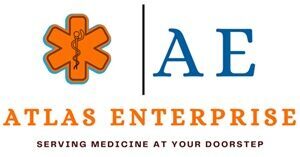Unlocking Growth: Exporting Pharmaceutical Products to the LATAM Market
Introduction
The Latin American (LATAM) region has become an increasingly attractive destination for global pharmaceutical exporters. With growing healthcare demands, expanding public and private healthcare infrastructure, and evolving regulatory frameworks, countries across LATAM present both challenges and substantial opportunities for pharmaceutical companies looking to expand their footprint.
Why LATAM is a Key Region for Pharma Exports
-
Growing Population and Healthcare Needs
LATAM is home to over 650 million people. With aging populations and increasing prevalence of chronic diseases like diabetes, hypertension, and cancer, the demand for pharmaceutical products is on the rise. -
Improving Healthcare Access
Many LATAM governments are investing in universal healthcare initiatives, expanding insurance coverage and public health programs. This expansion is increasing access to medicines across income groups and rural areas. -
Strategic Trade Agreements
LATAM countries have numerous free trade agreements (FTAs), including intra-regional pacts like Mercosur and broader agreements with the EU and North America. These FTAs can reduce tariffs and ease market entry for pharmaceutical exporters. -
Untapped Market Potential
While Brazil and Mexico dominate the regional pharmaceutical market, smaller markets like Colombia, Peru, and Chile are rapidly expanding and offer less-saturated entry points.
Key LATAM Markets at a Glance
-
Brazil: The largest pharma market in LATAM; strong regulatory body (ANVISA); local production required for public tenders.
-
Mexico: High reliance on imports; open regulatory environment; strong proximity advantage for U.S. exporters.
-
Argentina: Growing demand but import restrictions and currency volatility present challenges.
-
Colombia & Chile: Business-friendly environments; good entry points for generics and OTC products.
Regulatory Landscape
-
Navigating LATAM’s regulatory landscape is complex but essential. Each country has its own health authority (e.g., ANVISA in Brazil, COFEPRIS in Mexico, INVIMA in Colombia), and while harmonization efforts are ongoing, localized knowledge and partnerships are often necessary. Regulatory timelines can be lengthy, so advanced planning is crucial.
Top Export Opportunities in LATAM
-
Generic Medicines: Increasingly favored due to cost-effectiveness and supportive policies.
-
OTC Products: Rising demand for wellness and self-care solutions.
-
Biopharmaceuticals & Vaccines: Governments are prioritizing advanced treatments and pandemic preparedness.
-
Medical Devices & Supplements: Often exported alongside pharmaceuticals under broader health product categories.
Success Strategies for Exporters
-
Partner with Local Distributors: Leverage in-market expertise for smoother registration, compliance, and logistics.
-
Adapt to Local Demand: Offer product formats and price points suited to local economic realities.
-
Invest in Regulatory Affairs: Build a robust in-house or outsourced regulatory team for each target market.
-
Leverage Trade Missions and Exhibitions: Participate in LATAM pharma trade shows like CPhI South America and FCE Pharma to build connections and visibility.
Conclusion
Exporting pharmaceutical products to LATAM can be a highly rewarding endeavor, but success requires a nuanced understanding of local markets, regulations, and consumer needs. With the right strategy and partnerships, companies can position themselves to tap into one of the world’s most promising pharmaceutical growth regions.
